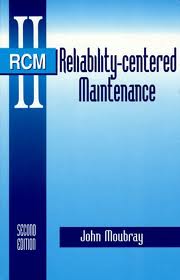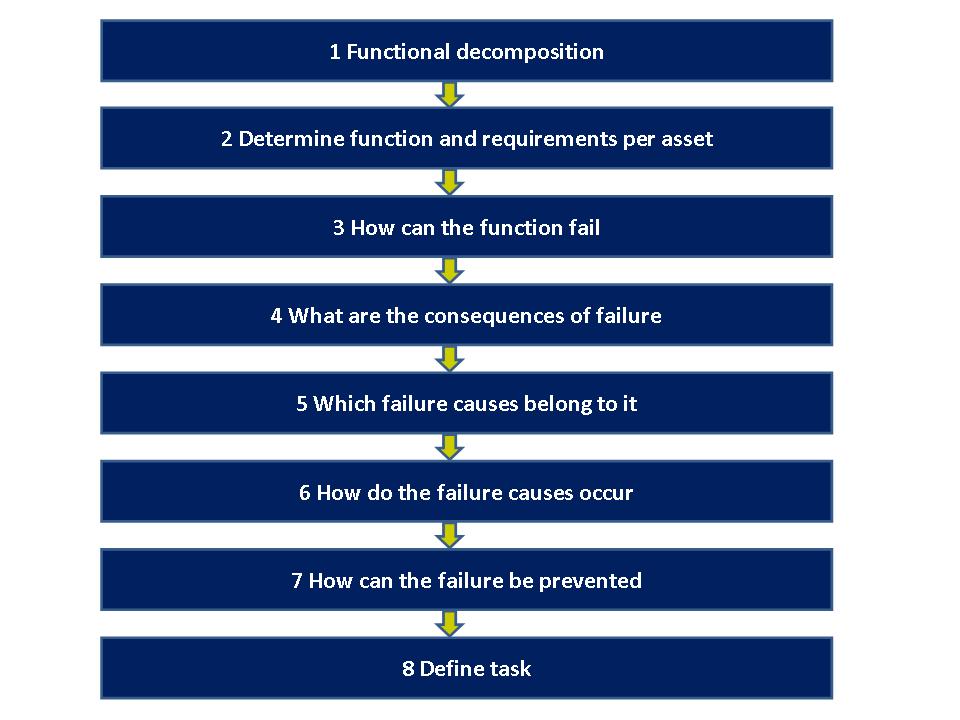How far with RCM?
13 July 2012 • John de Croon
risk management, policy development, planning
 Under pressure from influences such as an increasing competition or a regulator, companies improve their efficiency. Also, laws and regulations become stricter, impacting safety and environmental requirements. In an environment where the functional requirements remain constant, it may be required to maintain the asset so that it can keep on performing its function. To respond to these developments the RCM methodology (Reliability Centered Maintenance) was developed is late 70s to reduce the number of incidents during takeoff and landing of aircraft. It became clear that turnarounds did not affect the reliability and safety of the aircraft. Apparently maintenance was carried out on components that were not broken, while of course it is intended to maintain things that do fail. One reason was that risk assessments were no part in the preparation of maintenance, while risk assessments help to find items which could fail. And those risk assessments are an important part of RCM. The method is further developed to RCM II, with which it also became accessible to other industries[1]. Under pressure from influences such as an increasing competition or a regulator, companies improve their efficiency. Also, laws and regulations become stricter, impacting safety and environmental requirements. In an environment where the functional requirements remain constant, it may be required to maintain the asset so that it can keep on performing its function. To respond to these developments the RCM methodology (Reliability Centered Maintenance) was developed is late 70s to reduce the number of incidents during takeoff and landing of aircraft. It became clear that turnarounds did not affect the reliability and safety of the aircraft. Apparently maintenance was carried out on components that were not broken, while of course it is intended to maintain things that do fail. One reason was that risk assessments were no part in the preparation of maintenance, while risk assessments help to find items which could fail. And those risk assessments are an important part of RCM. The method is further developed to RCM II, with which it also became accessible to other industries[1].
RCM II (now and hereafter called RCM) is used to determine which measures should be taken to achieve the desired goals in the areas of safety, environment, reliability and availability as cost effectively as possible. This should not be confused with preventing all failures at all costs.
We hear different experiences. On the one hand there are companies which achieved improvements, but we also hear that the effort is disproportionate compared to the result. ‘How far should we go with RCM?’ Before I go into the answer, I first briefly discuss the method itself. The figure below summarises the steps.

First, the technical system is divided into sub-functions. Is that done, then for sub-function it needs to be determined what the function is and which requirements are applicable. These requirements deal for example with availability, environment and safety.
In the next steps is analysed how the function could fail. If possible statistics are applied (e.g. mean time between failure or MTBF) and the consequences of failure are determined (e.g. the direct but also indirect costs of a failure such as the loss of income or medical expenses due to an accident, as well as safety and environmental incidents). For the non-acceptable consequences mitigation measures need to be defined. Besides, for these consequences is analysed what the root cause is of the failure. Is that clear, then is determined in which ways the failure can be prevented. This can be a maintenance task (preventive or corrective), but the measures can be also design modifications, a training program, emergency procedures and manuals[2].
If you are reading this and you have no experience with RCM, I can imagine that this all sounds very extensive. When RCM is fully implemented, this is true. The problem is that there is no generic answer how much effort needs to be put in to achieve a good result: there is no 'one size fits all'. It also largely depends on the goals of your organisation and the assets. Do you have a new plant for which you still have warranty, then there probably is no need to immediately start with RCM. The need could increase when the plant gets older, the probability of failure increases and knowledge of suppliers becomes scarce (maybe your company has more knowledge of the equipment than the supplier itself). RCM can also be useful when the number of failures is limited but you have the feeling the supplier prescribes too much maintenance (the supplier also thinks of his own pocket).
Recently I saw a project plan at a client in which was described that 8000 hours are needed to execute an RCM analysis for a plant. Hence about five man-years! But that customer has experience (with other plants) that the availability increases by about 2,5%. That is more than enough to justify the effort.
Are you still sceptical and you do not yet know how far you have to go, then the following pragmatic approach is recommended. Start a pilot project for a limited number of assets. Start with assets which are most critical for your goals. The idea behind this is twofold. On one hand the performance related to the goals will be improved and on the other hand data is gathered regarding the effort to conduct an RCM analysis.
Furthermore, some practical hints and tips. As with other projects, management support is essential. The management needs to make people and resources available when RCM is taken seriously. Do record facts (derived from data) and assumptions firmly. Ensure that relevant stakeholders and experts are involved, both users and maintenance. The data analysis does not end when the first analysis is finished. RCM is a continuous improvement process. With the further implementation of RCM the amount of required data will increase. This can also imply that information systems must be adapted to ensure that causes of failures can be unambiguously defined, so that future analyses can be performed properly. And of course, a data management process needs to be implemented (see a separate column).
Finally, it is important to periodically evaluate the results. Adjust key assumptions if necessary. Are the results as expected (or better), carry on.
[1] See the book Reliability-Centered Maintenance Second Edition, John Moubray
John de Croon is partner at AssetResolutions BV, a company he co-founded with Ype Wijnia. In turn, they give their vision on an aspect of asset management in a weekly column. The columns are published on the website of AssetResolutions, http://www.assetresolutions.nl/en/column
<< back to overview
|


